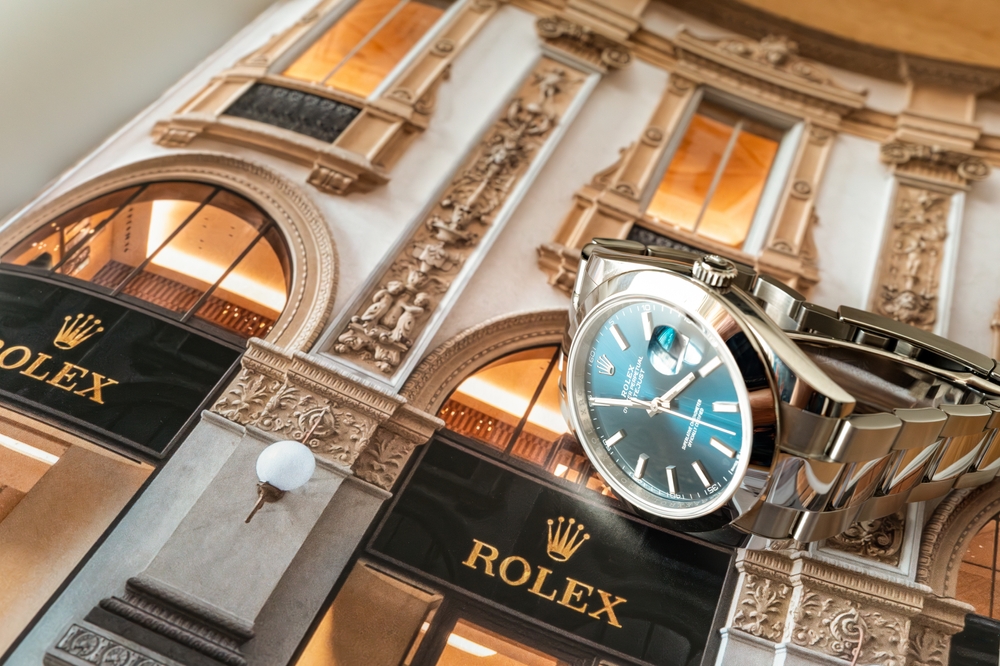In a world obsessed with appearances and instant gratification, it’s easy to feel the pressure to look wealthier than you actually are. With social media showcasing a never-ending stream of perfect lives, many people resort to borrowing, financing, or spending money they don’t have just to keep up. The desire to project an image of success can seem harmless at first, but the consequences often come in the form of overwhelming debt and long-term financial struggle. Here are 15 common ways broke people try to look rich—and the dangers they face as they go deeper into debt to maintain the illusion.
1. Buying High-End Fashion On Credit
It’s tempting to believe that wearing designer labels instantly elevates your status, but for those living paycheck to paycheck, it can often mean digging deeper into debt. The swipe of a credit card can give the illusion of wealth, but those high-interest rates will eventually catch up. The constant pressure to buy the latest trends to keep up with social expectations can push people into a financial hole. While the outfit may get compliments, the credit card bills don’t go away.
Many end up trapped in a cycle of paying minimum balances on credit cards, further adding to their debt. According to CreditCards.com, luxury spending often leads to mounting credit card debt, with interest rates making purchases significantly more expensive over time. The notion that owning a few luxurious items will transform their lifestyle is a dangerous fallacy. In the end, the outfits and shoes might not only empty your wallet but also rob you of the peace that comes with financial freedom.
2. Renting Fancy Cars To Fake Wealth
Leasing a luxury car for a few hundred bucks a month is one of the most common ways people try to mimic success without actually having it. The smooth leather interior and shiny exterior might turn heads, but behind the wheel, the person may be stressing over how to afford the payments. It’s an illusion that often causes more harm than good. The interest on the car loan or lease payments can take up a large portion of monthly income, leaving little room for savings or other investments.
Rather than building genuine wealth, those who opt for this strategy are often sinking into a cycle of financial instability. According to Glossy, rising costs and debt are forcing consumers to rethink spending on luxury items like cars and apparel. The car may seem like a symbol of success, but in reality, it may be dragging you further away from achieving true financial independence.
3. Hosting Lavish Parties On A Dime
Throwing an extravagant party with gourmet food and top-shelf liquor can create the impression of a well-to-do lifestyle, but it’s usually at the expense of financial stability. People often use credit cards to pay for the event or take out loans to cover the costs. The desire to make a splash in social circles can push them into overspending, but the aftermath is a mountain of debt and the stress of trying to repay it. While the event might create memorable moments, the hangover of debt will linger far longer.
When the credit card bills come in, the illusion of wealth quickly fades. According to CNBC, many Americans are still willing to splurge on travel, dining, and entertainment despite mounting credit card debt, which highlights the risks of overspending on discretionary expenses. Borrowing from friends or taking out payday loans to cover overspending can lead to even more financial strain.
4. Going On Expensive Vacations They Can’t Afford
There’s nothing wrong with taking a well-deserved vacation, but it’s when people use credit cards or loans to fund extravagant trips that they end up hurting their finances. These vacations often come with a hefty price tag, including flights, luxury accommodations, and fancy dinners. The Instagram pictures may show a life of luxury, but the reality is that you’re probably paying off that trip for months or even years after.
According to CNBC, 83% of travelers plan to use credit cards for summer vacations, with many unable to pay off their balances immediately. In pursuit of looking rich or having a jet-set lifestyle, many end up sacrificing financial security—the true foundation for a prosperous future.
5. Living In Oversized Homes Mortgaged To Their Eyeballs
A large, beautiful home can seem like the ultimate status symbol, but it can be a financial trap for those trying to live beyond their means. Many go into significant debt to purchase a home that’s far beyond their budget, often stretching themselves too thin with mortgage payments, property taxes, and maintenance costs. The desire to project wealth by living in a fancy house can result in a life filled with stress as people struggle to keep up with the bills. It’s a shiny, seemingly perfect facade that hides financial chaos behind closed doors.
Over time, the realization hits: that dream house has become a burden, rather than a symbol of success. The cost of living in such a property can siphon off savings and delay important financial goals, like retirement or investing in other assets. It’s easy to get caught up in the idea that owning a large house means you’ve “made it,” but it often comes with a far heavier price than anticipated. In reality, a more modest home might bring more financial freedom and peace of mind.
6. Flashing Fake Designer Goods
Some individuals resort to buying counterfeit luxury items as a way to convince others they are living a life of abundance. Whether it’s a fake designer handbag or knockoff jewelry, these items may look authentic at first glance but often crumble under scrutiny. While they may momentarily boost someone’s social status, they come with a heavy psychological toll. The constant fear of being caught or judged for wearing counterfeit goods can erode a person’s self-confidence.
What people don’t realize is that the money spent on these fakes could be better used to invest in actual assets or experiences that add real value to their lives. The short-term satisfaction of showing off fake items is quickly overshadowed by the nagging knowledge that they are deceiving others—and themselves. Instead of spending time worrying about the authenticity of your possessions, it’s better to focus on building a lifestyle that reflects true wealth and success. Real wealth doesn’t need to be shown off; it speaks for itself.
7. Borrowing Money For Lifestyle Upgrades
Taking out loans for non-essential upgrades, such as a new television, home renovations, or the latest tech gadgets, can be a sure way to go deeper into debt. The desire for the latest and greatest can lead to impulsive spending decisions that leave a person scrambling to pay off the loan. Although these purchases may seem like an improvement in quality of life, they come with long-term consequences. The financial strain from borrowed money often outweighs any temporary joy the upgrades provide.
What’s worse is that these loans often come with high interest rates, which can make the total cost much higher than anticipated. This kind of borrowing puts people in a perpetual state of repayment, diverting funds away from more important financial goals like saving for the future or emergency expenses. The pressure to keep up with trends can cause people to sacrifice their financial health for short-term satisfaction. A better approach would be to save up for the desired items, reducing the risk of debt and increasing overall financial stability.
8. Getting Into Cryptocurrencies And Risky Investments
Jumping into high-risk investments like cryptocurrency or day trading in an attempt to get rich quickly is another common tactic used by those living beyond their means. These markets are volatile, and while there is potential for high returns, the losses can be catastrophic. The allure of fast money can cloud people’s judgment, leading them to make impulsive, uninformed decisions. Instead of creating wealth, these risky investments often cause people to lose substantial sums of money, sinking them deeper into debt.
Many individuals who venture into these markets without a clear understanding of how they work often end up worse off. The emotional highs and lows of watching the market fluctuate can take a psychological toll as well. Investing in volatile assets without a solid financial plan can set back your wealth-building journey by years. Instead, focusing on a diversified, long-term investment strategy offers a safer path to building lasting wealth without the stress of constant market shifts.
9. Financing Everything They Buy
Financing purchases like furniture, electronics, and even everyday necessities is an easy way to get trapped in debt. The ability to buy now and pay later can be appealing, but it often leads to people purchasing items they can’t truly afford. Instead of saving up for bigger purchases or working within a budget, people opt for financing options that come with hefty interest rates. Over time, the accumulated debt from these financing plans can become overwhelming, creating financial strain and a sense of helplessness.
What’s often overlooked is that financing purchases can stretch out payments over months or years, making the total cost far higher than initially expected. The temporary pleasure of buying on credit can quickly turn into a burden when monthly payments begin to pile up. It’s easy to get lost in the convenience of financing, but living within your means and saving up for the things you want can offer far greater financial freedom in the long run. Building good saving habits is a far more sustainable path to success.
10. Imitating Wealthy Social Circles
Trying to keep up with the wealthy and successful people around you can often result in falling into debt. Whether it’s attending expensive social events, dining at high-end restaurants, or purchasing items that reflect the status of your social circle, the pressure to conform can be overwhelming. The desire to be seen as one of the “elite” often causes people to stretch their budgets to accommodate these expenses. In the long run, it only contributes to a cycle of overspending and financial anxiety.
Instead of striving to be accepted in wealthy circles, it’s more important to focus on building your own financial future. Living authentically and not trying to impress others can bring a sense of fulfillment that money can’t buy. True wealth comes from financial stability, not from trying to maintain a facade. In the end, those who live within their means are the ones who end up with the most peace of mind.
11. Buying Expensive Pets
Owning a designer dog or rare breed of pet can seem like a status symbol, but it often requires significant financial resources. The upfront cost of purchasing these pets can be steep, but the costs don’t stop there. Vet bills, food, grooming, and other care needs add up quickly, making it difficult for people to keep up with the expenses. Trying to maintain this lifestyle can create additional financial strain that is hard to overcome.
Many people stretch their budgets to keep up with the image of having an expensive pet. They may even sacrifice other areas of their lives, such as their own needs, to keep up the illusion. Eventually, the financial burden can lead to a breakdown in other areas of life, causing even greater stress. It’s important to consider whether the desire for a high-maintenance pet is truly worth the financial sacrifice.
12. Getting Into Debt For Their Dream Wedding
Some couples go to extreme lengths to have a lavish wedding, maxing out credit cards or taking out loans to pay for the celebration. While weddings are special, the pressure to impress guests with an over-the-top affair can lead to unnecessary debt. The cost of designer dresses, venues, catering, and entertainment can quickly add up. After the honeymoon is over, the newlyweds are left with financial stress, long after the event has passed.
Rather than focusing on impressing others, couples should prioritize what truly matters to them on their special day. Keeping the wedding affordable and within budget ensures a happier, more financially secure future. The true value of a wedding isn’t in how lavish it is, but in the love and commitment shared between the couple. Planning a wedding within your means ensures that the beginning of your marriage isn’t overshadowed by debt.
13. Using Personal Loans To Pay Bills
When living paycheck to paycheck, many people take out personal loans just to cover monthly bills, creating a dangerous cycle of borrowing to pay for basic needs. This immediate fix may provide temporary relief, but it doesn’t address the root cause of the problem. As loan payments start stacking up, the financial burden grows heavier. Instead of alleviating stress, this approach often amplifies the problem, leaving people with even more debt than before.
It’s better to address financial challenges head-on by budgeting and prioritizing spending. Taking out loans to pay for daily expenses only adds to the weight of future obligations. Finding ways to reduce spending and increase income is a healthier, more sustainable way to improve financial health. Long-term solutions, like improving financial literacy and creating an emergency fund, will go much further in achieving true financial freedom.
14. Upgrading To The Latest Tech Gadgets
The constant release of new smartphones, laptops, and tech gadgets can create an overwhelming urge to upgrade every time something new hits the market. While these upgrades might give the illusion of wealth and status, they often come with a hefty price tag that isn’t always justified. Many people max out credit cards or take out loans to keep up with the latest technology, even if they don’t truly need it. These purchases add up over time, and the interest on credit payments only worsens the financial burden.
Instead of falling into the trap of always upgrading, it’s better to focus on buying technology that suits your needs, rather than buying what’s trendy. Living within your means and saving for bigger, more meaningful investments is a more sustainable way to achieve financial stability. Tech gadgets come and go, but smart financial decisions can create lasting wealth. It’s important to invest in things that will provide long-term value, not just temporary satisfaction.
15. Trying To Match A Celebrity Lifestyle
Following the lifestyles of celebrities, with their endless shopping sprees, lavish homes, and constant partying, can be enticing. Many try to emulate their idols, even if it means taking on debt or stretching their financial limits. The pressure to live like the rich and famous can overshadow the importance of financial security. Instead of focusing on impressing others with a glamorous lifestyle, it’s more important to focus on personal financial goals and long-term well-being.
The allure of fame and fortune is tempting, but it’s important to remember that true wealth isn’t about how much you spend, but how much you save and invest wisely. By prioritizing financial health over social comparisons, you can build a more secure and fulfilling future. Emulating someone else’s lifestyle may look glamorous on the surface, but it rarely leads to lasting happiness or success. True wealth comes from making mindful, responsible financial choices that lead to real independence.
This article is for informational purposes only and should not be construed as financial advice. Consult a financial professional before making investment or other financial decisions. The author and publisher make no warranties of any kind.























